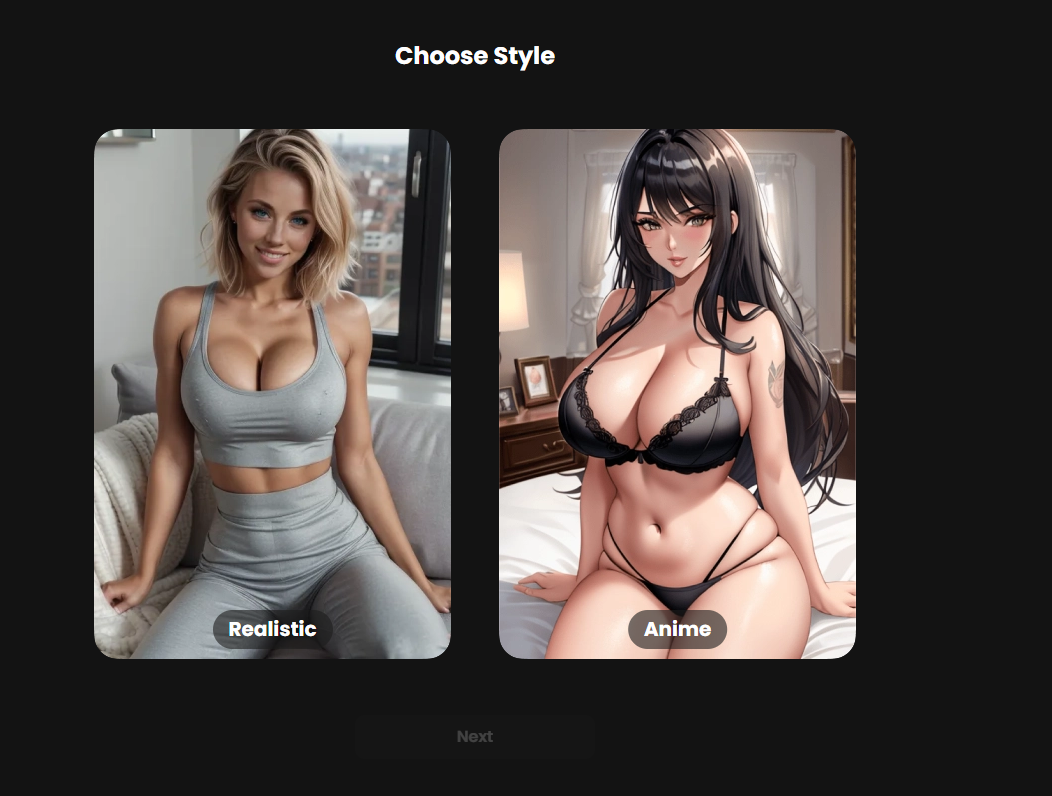Exploring the Mechanics of Ai Cameltoe and Its Role in Advertising
There is a growing trend in advertising that utilizes the mechanics of AI cameltoe to attract attention and sell products. This controversial technique involves using artificial intelligence to enhance images by creating a visible indentation between the labia majora, mimicking the appearance of cameltoe.
While some argue that it objectifies women and perpetuates unrealistic beauty standards, others see it as an effective marketing strategy. Either way, its impact on society and its role in advertising continues to be explored.
Defining AI Cameltoe
At its core, AI cameltoe is an advanced form of digital manipulation wherein computer-generated graphics or images are used to create an illusion of a woman’s genitalia showing through tight clothing. It is often used in advertisements to attract attention and generate controversy, ultimately leading to increased brand visibility.
This technology utilizes cutting-edge algorithms and machine learning techniques to create hyper-realistic depictions of women’s bodies. These models are then inserted into advertisements, giving the impression that they are wearing revealing clothing that accentuates their body parts.
The Role of AI Cameltoe in Advertising
The use of AI cameltoe in advertising has been met with both praise and backlash. On one hand, proponents argue that it is a clever marketing tactic that effectively grabs the audience’s attention and generates buzz around a product or brand. They also claim that it can be a powerful tool for challenging societal norms and pushing boundaries. As technology continues to advance, the AI Stripper software is allowing businesses to automate processes and increase efficiency in a variety of industries.
On the other hand, critics argue that AI cameltoe objectifies women by reducing them to mere sexual objects for the purpose of selling products. They also raise concerns about the potential impact on young girls who may be exposed to these hyper-sexualized images at a young age.
Despite the controversy surrounding its use, there is no denying that AI cameltoe has made an impact on the advertising industry. Then, take advantage of the incredible savings offered by porndeals for premium adult content and fulfill all your female fantasies. Let us take a closer look at three popular AI cameltoe campaigns and the pros and cons associated with each.
Candy.ai: The Sweetest Temptation

Candy.ai was one of the first companies to incorporate AI cameltoe in their advertising strategy. Their infamous Candy Girls campaign featured computer-generated models wearing tight, revealing outfits that accentuated their curves and genitalia. This campaign caused a frenzy in the media, with some praising it for being edgy and provocative while others slammed it for objectifying women.
Pros:
- The use of AI cameltoe generated significant buzz around the brand, leading to increased visibility and sales.
- It challenged societal norms and sparked conversations about body image and objectification in the media.
- Candy.ai was able to target a younger audience through this controversial campaign.
Cons:
- Some critics argued that it perpetuated harmful stereotypes about women’s bodies being used solely as objects of desire.
- The Candy Girls campaign received backlash for sexualizing young girls and promoting unattainable beauty standards.
- The controversy surrounding this campaign may have alienated potential customers who were offended by its imagery.
Seduced.ai: Selling More Than Just Products
Seduced.ai took a different approach to incorporating AI cameltoe in their advertising. Instead of using computer-generated models, they used real women wearing tight clothing that simulated the appearance of cameltoes. This campaign received mixed reactions, with some praising it for celebrating female sexuality while others criticized it for exploiting women’s bodies for profit.
Pros:
- The use of real women instead of computer-generated models was seen as a step towards authenticity and inclusivity in their advertising.
- Seduced.ai successfully tapped into the growing trend of female empowerment and body positivity, garnering support from their target audience.
- The campaign generated a lot of buzz and media coverage, ultimately leading to increased brand visibility.
Cons:
- Some critics argued that it was still objectifying women by focusing solely on their sexual appeal rather than their talents or abilities.
- The use of real women may have alienated potential customers who were uncomfortable with the overtly sexual imagery.
- This campaign faced backlash for exploiting women’s bodies and perpetuating harmful beauty standards.
PromptChan: The Dark Side of AI Cameltoe

While Candy.ai and Seduced.ai used AI cameltoe as a marketing tool, PromptChan took a more sinister approach. This company created an app called PromptCam that allowed users to insert AI cameltoes into any photo they took. The app was marketed as a way to make photos more exciting and provocative, but it quickly gained notoriety for its potential to be used for non-consensual purposes.
Pros:
- The PromptCam app received significant media attention, making it a viral sensation almost overnight.
- It tapped into the growing trend of augmented reality and customization in social media.
- The controversy surrounding the app attracted curiosity from potential users who wanted to see what all the fuss was about, resulting in high download rates.
Cons:
- The app was removed from app stores due to its potentially harmful implications on society.
- PromptChan faced legal action and damage to their reputation due to this controversial campaign.
- This campaign received intense backlash for promoting non-consensual behavior and violating people’s privacy through the use of AI cameltoe technology.
The Impact of AI Cameltoe on Society
The use of AI cameltoe in advertising has raised important questions about the impact it has on society, particularly on women and young girls. Some argue that it perpetuates harmful beauty standards and objectifies women, while others believe it can be a tool for challenging societal norms and promoting empowerment.
Objectification vs Empowerment
One of the main criticisms against AI cameltoe is that it reduces women to objects of desire, focusing solely on their physical appearance rather than their talents or abilities. This argument poses the question – does using AI cameltoe in advertising objectify or empower women?
On one hand, critics argue that these campaigns perpetuate harmful stereotypes about women’s bodies being used solely for sexual appeal, leading to unrealistic expectations and body image issues among young girls. They also claim that it reinforces the idea that a woman’s value lies in her physical appearance rather than her intellect or skills.
On the other hand, proponents argue that AI cameltoe can be used as a tool for empowerment by challenging societal norms and pushing boundaries. It can also be seen as a way to celebrate female sexuality and promote body positivity by showcasing diverse body types.
The Impact on Young Girls
Another area of concern surrounding AI cameltoe is its potential impact on young girls who may be exposed to these hyper-sexualized images at a young age. Critics argue that this type of advertising contributes to the sexualization of children and promotes unhealthy beauty standards.
However, some argue that exposing young girls to diverse representations of female bodies can have a positive impact by promoting self-acceptance and body positivity. By showcasing different body types, sizes, and shapes, AI cameltoe campaigns can challenge traditional beauty standards and promote inclusivity.
Key Points
AI cameltoe has certainly made a mark on the advertising industry, sparking debates and discussions about its impact on society. While some argue that it objectifies women and promotes harmful stereotypes, others believe it can be a tool for empowerment and challenging societal norms.
As technology continues to advance, it is important that we continue to have these discussions and critically examine the implications of new forms of advertising. Whether you view AI cameltoe as a clever marketing tactic or an exploitative tool, one thing is certain – it will continue to push boundaries and spark controversy in the world of advertising.

Candy.ai
✔️ Generate AI Porn Images
✔️ Listen To Voice Messages
✔️ Fast Response Time

Seduced.ai
✔️ Generate AI Models
✔️ Save & Reuse Girls
✔️ 300 Images Per Month

PromptChan.ai
✔️ Completely Free To Test
✔️ Edit Your AI Models
✔️ Make Porn Images (no limit)
What is AI cameltoe and how does it work?
AI cameltoe, also known as artificial intelligence cameltoe, is a technology that uses machine learning algorithms to identify and enhance the appearance of a woman’s genital outline in clothing. This can be achieved through image processing techniques such as blurring or smoothing to create a more prominent cameltoe effect. The AI model is trained on thousands of images of women with visible cameltoes, allowing it to accurately detect and manipulate the shape and position of the fabric around the crotch area. It has been controversially used in fashion and pornography industries, raising ethical concerns about objectification and unrealistic beauty standards.
How is AI technology being used to enhance cameltoe in media and entertainment?
AI technology is being used to enhance cameltoe in media and entertainment through the use of image recognition algorithms that can identify and highlight these features on individuals or characters. This allows for a more exaggerated and visually appealing portrayal of cameltoe in various forms of media, such as advertisements, movies, and video games. AI can also be used to digitally manipulate images or videos to create an enhanced cameltoe effect for aesthetic purposes.
